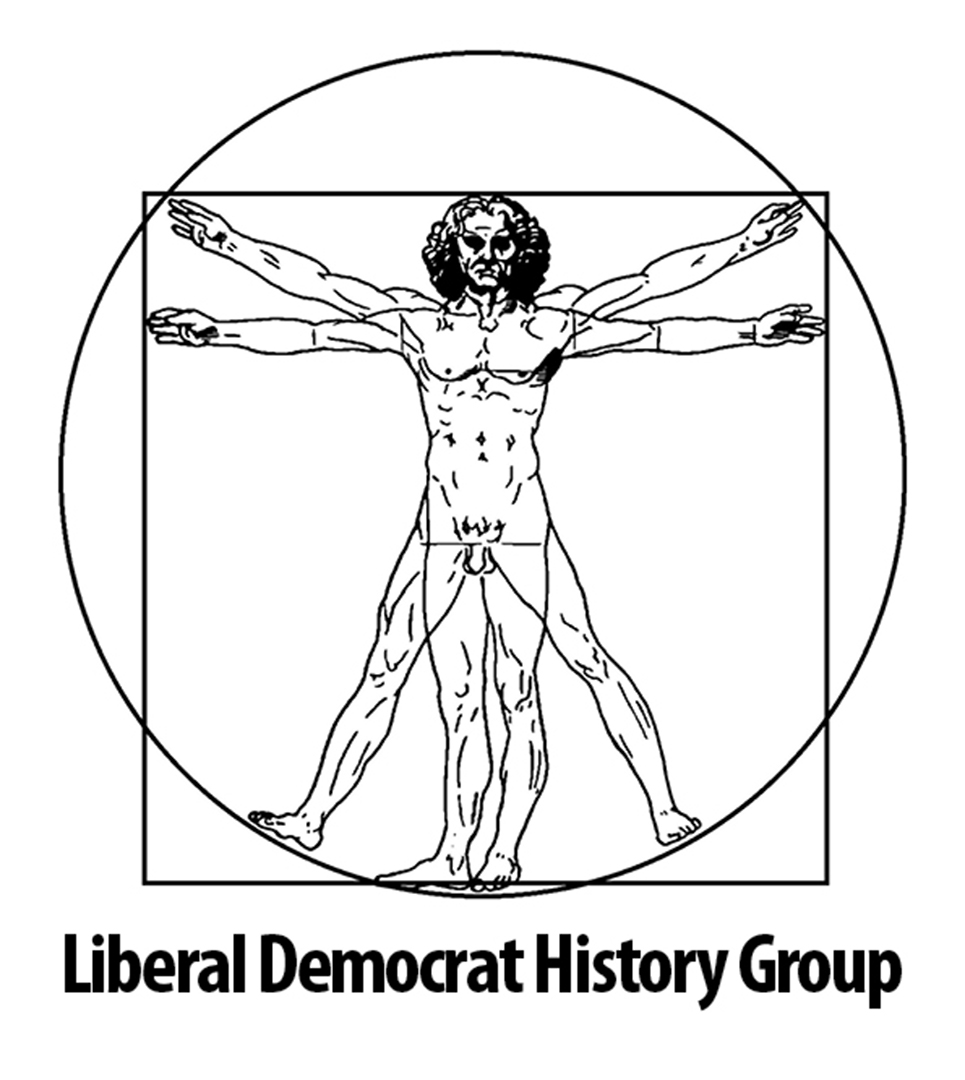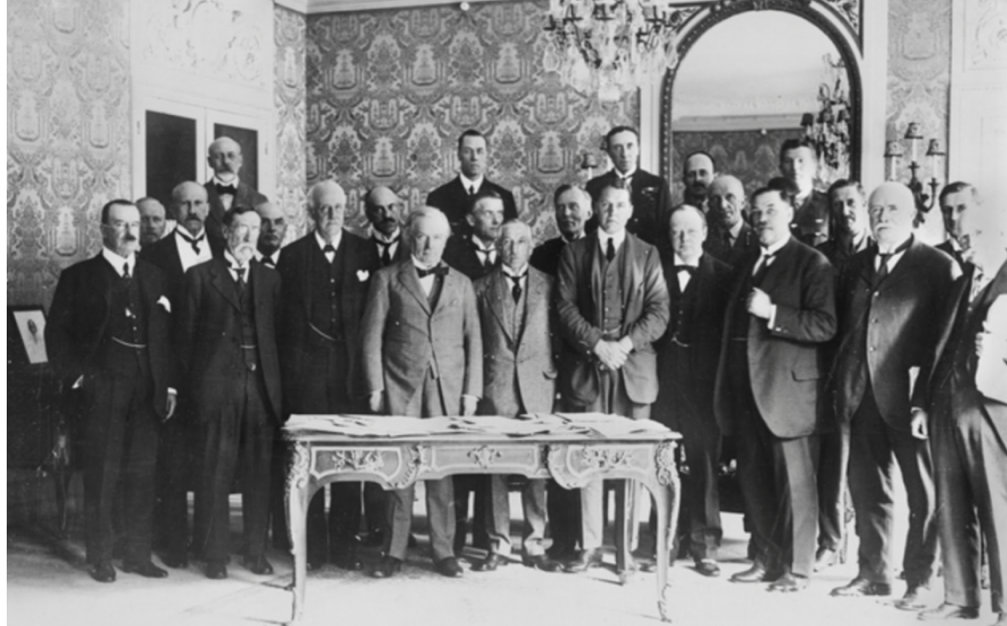At the 1918 coupon election, the party’s wounds were exacerbated further as Asquith’s Independent Liberals were slaughtered by coalition candidates who had received Lloyd George’s personal endorsement. Asquith himself, along with the majority of his inner circle, were defeated and in all just 28 Wee Frees survived the contest. Although Lloyd George’s Coalition Liberals secured 133 seats, the wartime Prime Minister became an increasing prisoner of the Conservative Party, which now dominated the Coalition Government. Lacking a solid political base of his own, Lloyd George began to formulate plans for a new centre party in order to formally fuse his supporters with the Conservative Party and secure his political future. However he was forced to abandon the idea when it was rejected by both his own Liberal followers and the Conservatives, who eventually ousted him following a meeting at the Carlton Club on 19 October 1922, deciding to fight the forthcoming election independently.
Meanwhile the Independent Liberals continued to lose support as they returned to outdated Gladstonian policies, drifting further to the right under Asquith’s haphazard leadership, following his re-election to Parliament in the Paisley by-election of 1920. Between 1918 and 1922 Asquithian Liberals came third in 15 out of the 24 by-elections that were fought as three-cornered contests. In the meantime, Lloyd George had established his own separate party organisation in the form of the National Liberal Party, but his attempts to create a new political base failed to take hold in the constituencies. Despite a plea from his ally Sir Alfred Mond, the Liberals again went to the polls as a divided force in November 1922 following Lloyd George’s resignation after losing the support of his Conservative coalition colleagues. Although Asquith’s Liberals did manage to boost their numbers by returning 54 MPs, the National Liberals were reduced to 62 seats, unable to maintain their previous success without the support of the coupon they had benefited from in 1918. The overall result for Liberalism was more troubling because for the first time the number of Labour MPs in the new Parliament outnumbered their divided Liberal rivals, winning 142 seats in all.
Yet just a year later the Liberals found a single cause around which they could unite, when the Conservative Prime Minister, Stanley Baldwin, proposed to halt creeping unemployment by seeking a popular mandate to introduce protectionist measures. In the subsequent 1923 election the Liberals fought a negative campaign in defence of free trade and experienced a temporary revival, polling 29.7 per cent of the popular vote and gaining 53 seats from the Conservatives. Nevertheless, their promising performance disguised their longer-term demise, as Labour continued to make gains in working class areas at their expense, confirming the Liberals’ decline to the position of a minority party.
With no single party securing a majority, Asquith decided that the Liberals should support the first Labour Government, biding their time until the socialists bungled their responsibilities, when the Liberals could step in and save the day. ‘The experiment could hardly be tried under safer conditions’, he declared. However, his decision proved fatal, Labour presenting themselves as a credible alternative to the Tories and seeking to destroy the Liberals and capture their supporters through a policy of open warfare at by-elections. The Liberals found themselves in a Catch-22 situation that they themselves had created. In areas such as housing and unemployment they found themselves largely in agreement with Labour, yet if they supported the Government’s programme they would appear redundant, and desperate, given Ramsay Macdonald’s hostility towards them. On the other hand, if they were to use their position to vote the Government out of office then they would face a further election campaign that they lacked the resources to fight. The temporary unity of the party was rapidly undermined as Liberals began to voice their own opinions on the situation in different division lobbies.
Disagreements over Lloyd George’s personal fund (derived from the sale of honours when he was Prime Minister) also exacerbated the splits within the party. Despite detesting Lloyd George and the nature of his fund, Asquith’s followers realised that his capital offered salvation to their dilapidated organisation. Lloyd George, however, recognised that his treasure chest constituted a useful bargaining tool that he could use to gain greater control over the party. After a series of tense negotiations and just days before the 1924 election was announced, Lloyd George finally agreed to provide £50,000 to support just 340 candidates. This lack of funding, coupled with the Liberals’ dismal performance in the previous Parliament, contributed to catastrophic results for the party in the October contest, where Labour increased their poll by over a million votes, despite a wave of anti-Communist feeling. The Liberals lost 119 seats, reducing their numbers in the House of Commons to just 40, confirming their demotion to the role of the country’s third party, after securing only 17.6 per cent of the popular vote.
Asquith, having lost his seat, moved to the House of Lords and Lloyd George assumed greater control of the organisation as Chairman of the Parliamentary Party. Although a tenuous unity was achieved between the pair, the final Asquith/Lloyd George split occurred over the General Strike in 1926, when the latter, supported by the rank and file, rejected Asquith’s call for an unconditional surrender from the strikers. Following Asquith’s resignation, Lloyd George began purging the organisation of his old Asquithian enemies and a number of leading figures, including Runciman and Grey, left the party in disgust to form the Liberal Council.
Nevertheless, with Lloyd George back at the helm and financing a series of radical policy programmes, the future looked bright, with two by-election victories in the spring of 1927. Lloyd George commissioned Keynes to lead an inquiry into the country’s industrial problems and the ensuing Yellow Book (*i*Britain’s Industrial Future*i*) formed the basis of the Liberal’s ambitious 1929 election campaign, pledging to reduce unemployment through public works schemes. Trevor Wilson has described the book as ‘the most farsighted policy document produced by any political party between the wars’ and even Lloyd George’s former critics rallied behind the plans.
With a strong leader, an original programme and 500 funded candidates, the 1929 election presented the Liberals with their best chance at revival and the party managed to poll over 5 million votes. Sadly their radial programme was somewhat ahead of its time and with the first-past-the-post system weighed against their even spread of support across the country, the Liberals were unable to break their third party status, winning just 59 seats. Furthermore, with no party having gained an overall majority in the three-cornered fight, the Liberals again faced the dilemma about whether to use their position holding the balance of power to back a second Labour administration.
The Liberals’ tenuous unity was again shattered as the party began to disagree over their relationship with the new Labour Government. Whilst Lloyd George favoured co-operation in order to revive Liberal fortunes, by securing electoral reform and influencing unemployment policy, a number of Liberals, led by Sir John Simon, favoured a more independent line and began defying their leader in the division lobbies.
The formation of the National Government in August 1931 to tackle the unemployment crisis was welcomed by Liberals as an opportunity to serve in office once again, but when the Conservatives forced an early election just weeks later, the Liberals realised the trap they had fallen into. Lloyd George, incapacitated by illness, accused the party’s temporary leader, Herbert Samuel, of signing the Liberals’ death warrant by agreeing to the contest, and along with three of his family members, broke ranks with his colleagues. Sir John Simon, having been promised Tory co-operation at the polls, finally formed a separate organisation, the Liberal Nationals.
Liberal numbers increased to 72 MPs, but they were split three ways (Simonites 35, Samuelites 33, Lloyd George’s group 4), marking the denouement of the recognised Liberal Party that had been in the grip of death since the war. Lloyd George, now too radical for the official Samuelite group, continued on an independent course, although his Council of Action never achieved any real success. The Samuelites, having been made to accept the increasingly protectionist policies of the National Government, saw their position greatly undermined as clamour from the Liberal rank and file finally forced them to resign from the Cabinet in 1932, finally crossing the floor into the political wilderness in November 1933. Meanwhile, the Liberal Nationals, who remained as part of the administration, became increasingly indistinguishable from the Conservative Party.
With a lack of distinct policy, cohesive organisation, strong leadership or popular base, the results of the last election before the Second World War illustrated just how far the Liberals had fallen. Fielding just 151 candidates, the party managed to return a mere 20 representatives to Westminster in the 1935 contest. The party leader, Samuel, was defeated, his place being taken by Sir Archibald Sinclair.
Sarah Taft is the deputy editor of the Journal of Liberal History

